Tillandsia hirta
Click thumbnails for full size, scaled to a new window.
Tillandsia hirta
See DI02/14: A Key to Tillandsia subgroup diaphoranthema.
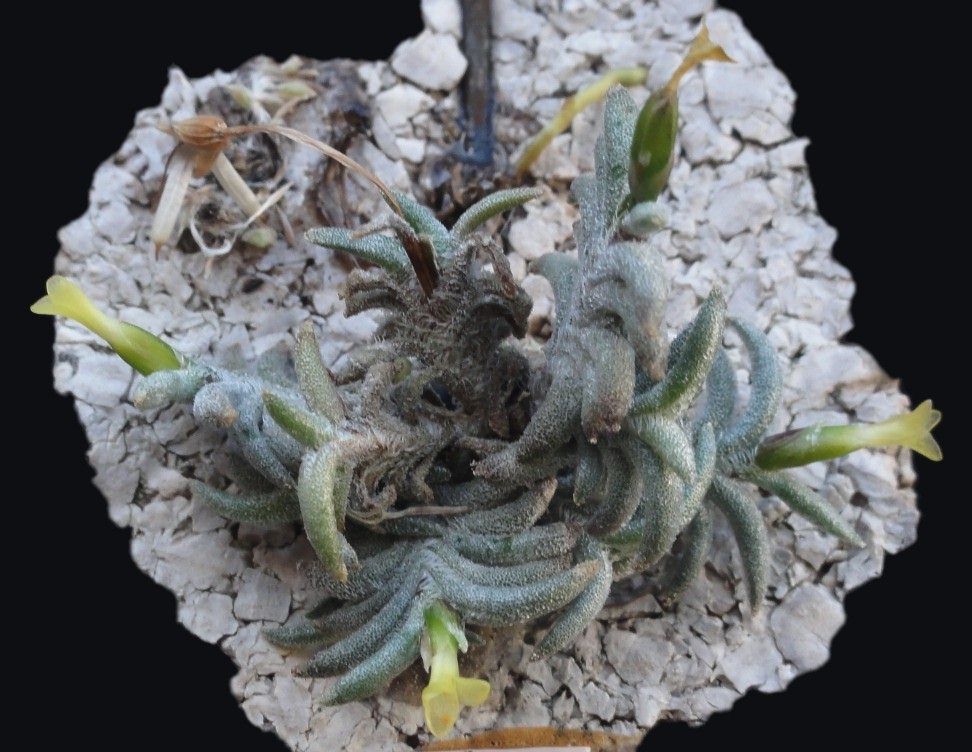
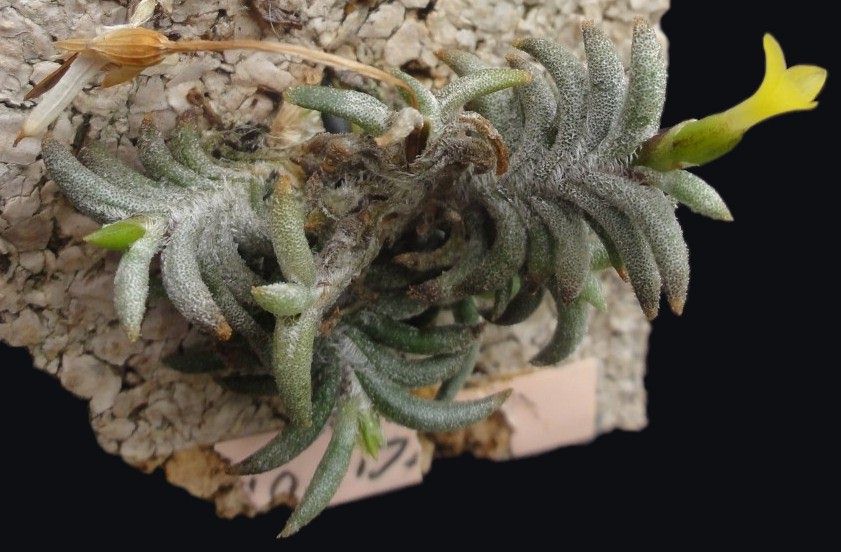
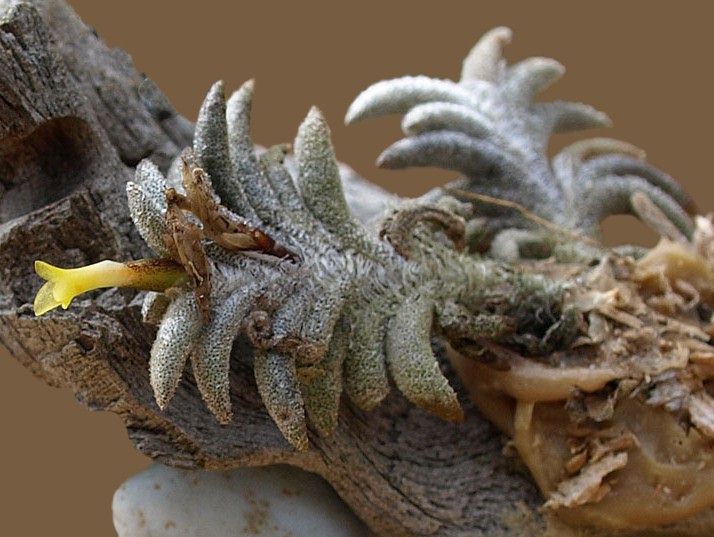
| Stephen Haines 11/13 (small form) |
Steve Morgan 11/14, as hirta. Later determined to be T. virescens |
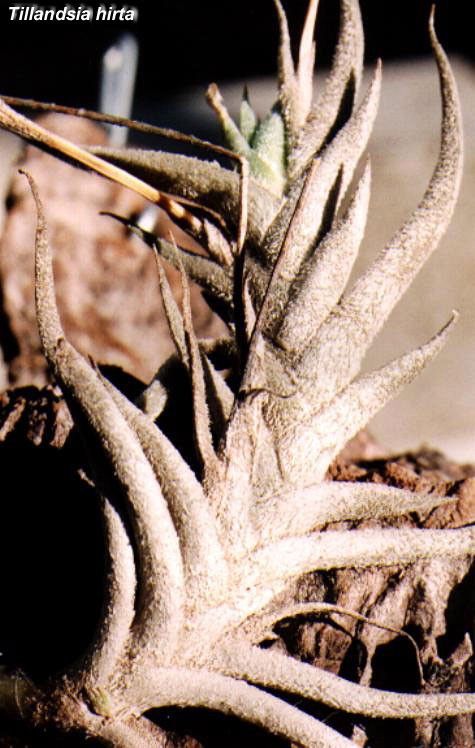

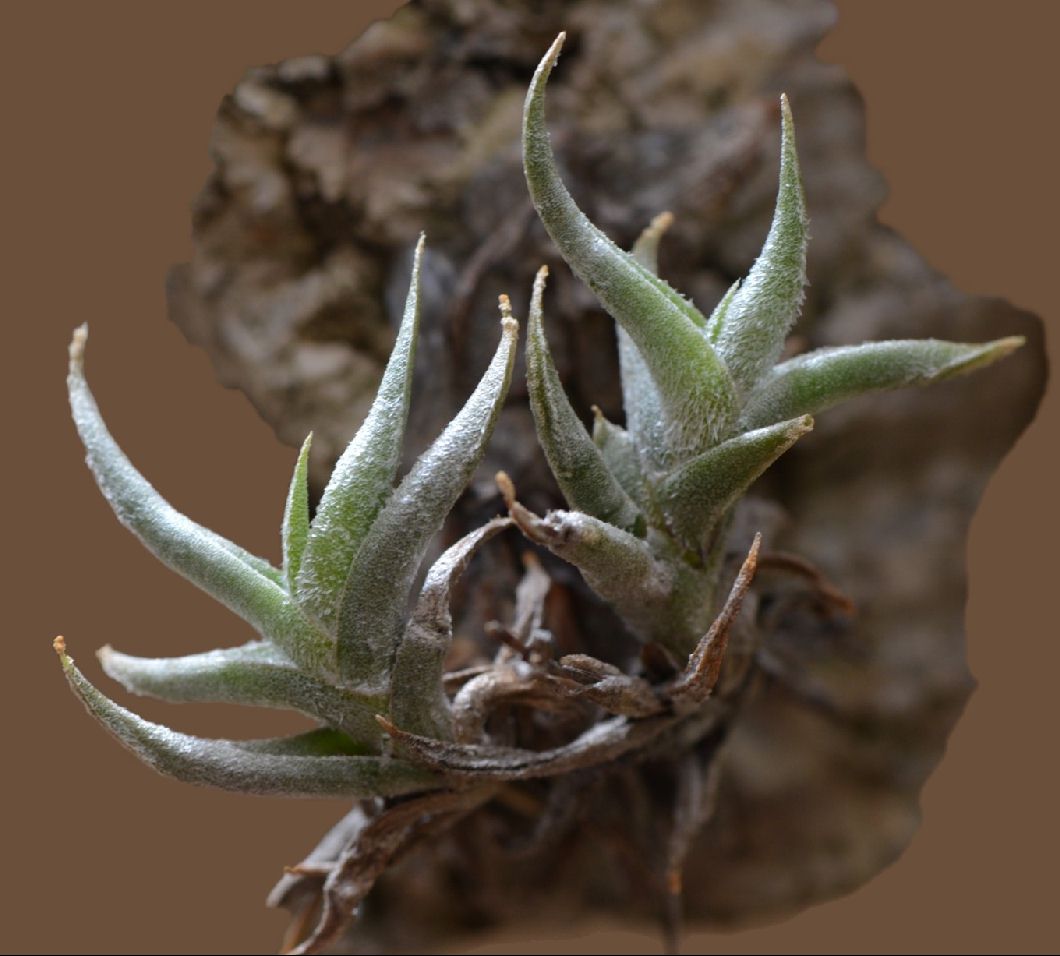
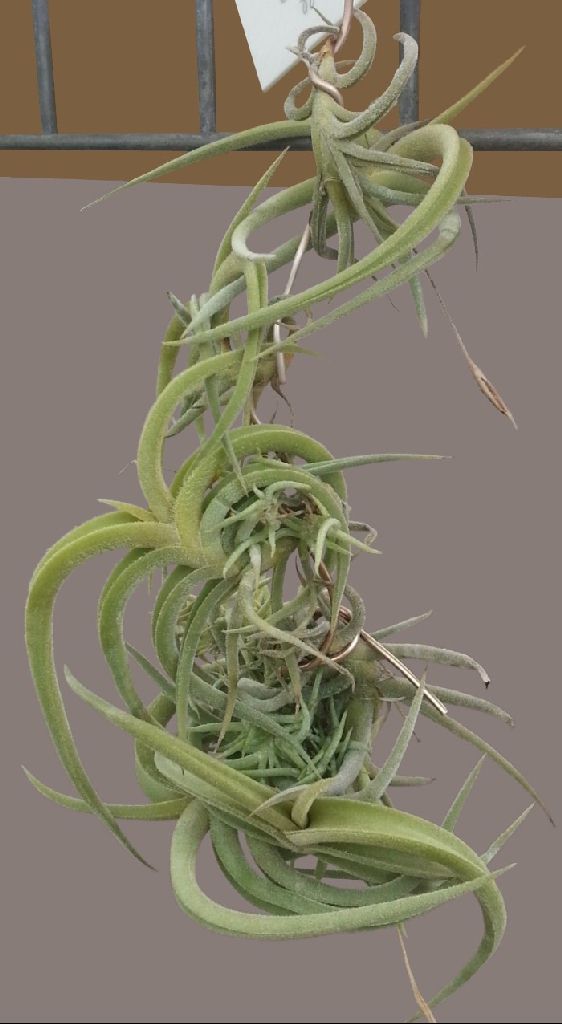
| Derek Butcher. |
Stephen Morgan 11/14. |
George Nieuwenhover 11/14. |
Chris Larson 11/14. |
Derek Butcher 16/11/14 ... "I did have the 'true' hirta from Lotte but it is difficult to grow in Adelaide and is no more! So the photos I have are all the more valuable to me. When Walter sent me a whole swag of T. virescens and capillaris in 1994 I thought I had the full range! Mind you when they flowered I found it hard to distinguish which species was which following Walter's drawings. So the really truncate version from Heidelberg has me intrigued. I see that you have photos of this in TAXON under T. virescens but the floral bract is rounded and suggests capillaris.. Is it a T. virescens ? If so which group does it belong to? I cannot tell from the photos I have from the two Steves!
You link it with a T. capillaris that you have. I am getting confused as an ancient fellow!
So can any of the two Steves or Peter Tristram decide if it is a virescens or a capillaris and we can put 'Heidelberg' on the label so we know what plant we are talking about."
Stephen Morgan 16/11/14 ... "I have attached a photo of the real T. hirta (just taken). I think my previous plant is T. capillaris.Have looked in the book, World of Tillandsias by Jan Maruska, page 12. This plant looks a close match. The flower on my plant seems to be more exerted, this is assuming the ID in the book is correct! Thoughts any one?"
George Nieuwenhover 16/11/14 ... "Hi Derek, I have a plant in my collection (see attached photo ) which I am sure came from you it has T. hirta on the label with the number 984 on the back it says LH 11/06 LH no doubt stands for Lieselotte Hromradick (spelling?) is this the missing or extinct hirta you are referring to ?
Chris Larson 20/11/14 .... "My T. hirta label reads - '#7296 LH, 1500m, km 12 nord | Potrerillos, Mendoza, Argentina' "
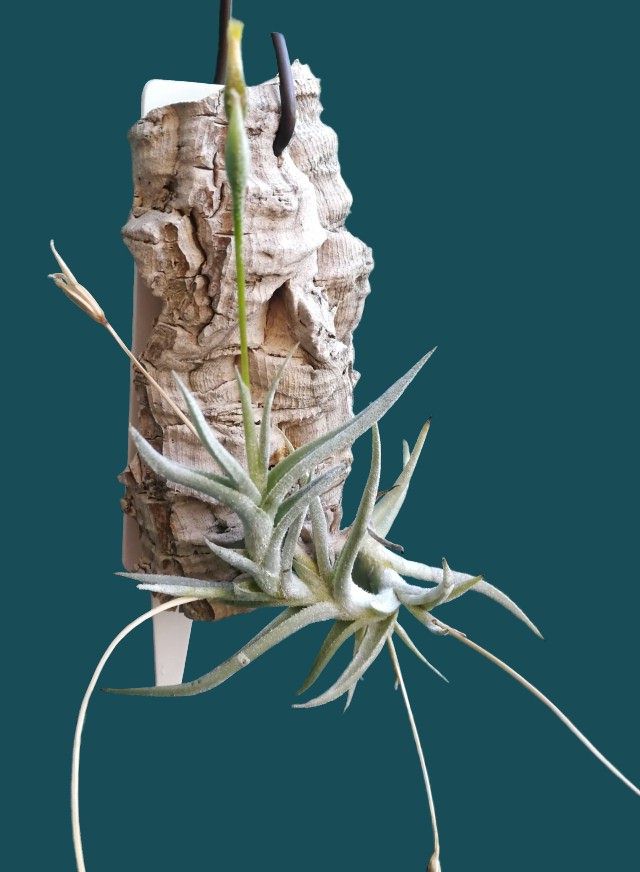
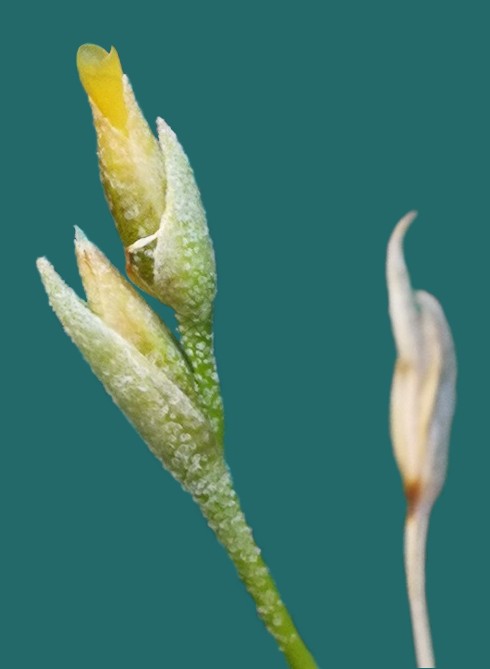
Tillandsia hirta W. Till & L. Hromadnik Pl. Syst. Evol. 147:285-287 (1984)
A T. gilliesii Baker, cui affinis, foliis tomentosis, caule manifesto, lamina foliorum teretra haud compressa et area distributionis bene differt.
Plant - flowering 10 to 20 cm high, short caulescent, single or few branched.
Leaf - distichous, 2 to 6 cm long, dense silvery tomentose.
Leaf sheath - oval, 8 mm long, 6 mm wide, clasping the stem, densely tomentose, glabrous towards base, membranaceous, nerved.
Leaf blade - more or less recurved, ascending towards the tip, 10 to 50 mm long, base 2 to 4 mm diameter, terete, subulate-acuminate.
Scape - 10 to 60 mm long, 1 mm diameter, sub-glabrous.
Scape bract - rarely one immediately below the inflorescence.
Inflorescence - 1 to 3 flowered, distichous, 10 to 25 mm long.
Flower - subsessile.
Flower bracts - dense lepidote, nerved, ecarinate, erect, 7 to15 mm long, 5 mm wide, oval or lanceolate, acute, as long as or exceeding the sepals.
Sepal - 10 – 12 mm long, dense lepidote, lanceolate, thin, nerved, equally short connate.
Petal - yellowish, blade of the petal narrow, erect, forming a tube.
Stamen & Gynoecium - included, petals twice as long as the genitalia.
Anther - orange (1.4-) 1.7 (-2.1) mm long, 0.25 to 0.3 mm diameter; pollen same colour as anther.
Filament - pale, one nerved (3.2-) 3.8 (-4.9) mm long, inserted at base of filament.
Style - 1/3 or 1/4 size of ovary.
Stigma - inconspicuous.
Ovary - (3.8-) 4.3 (-5.2) mm long, (1.8-) 2.2 (-2.7) mm diameter.
Capsule - cylindrical, to 20 mm long.
Habitat - epiphytic on trees, bushes or Cactus
Type - Bolivia, Dept. Cochambamba, Punata near Cochabamba, 2600 m August 1979, leg. H. and L. Hromadnik HR 5001 (WU).
Paratypes: Peru: Arequipa, near Arequipa, Feb. 1939, C. FENNER s. n. (GH); Arequipa, 7600 ped., Jun. 1926, G. TATE 1196 (NY); Arequipa, below Tingo, 29. 8. 1914, J. ROSE 19014 (GH, NY, US); km 18,5 on road Arequipa - Yura, 2500 m s.m., 23. 8. 1982, W. TILL 225 (WU), W. TILL 225/1 (WU), E VITEK 123-4 (herb. VITEK, 3 fol.); km 21 Arequipa-Yura. 2500 m s.m., 23. 8. 1982, W. TILL 227 (WU); Yura, 2500 m s.m:, 23. 8. 1982, W. TILL. 226 (WU); Bolivia: Chuquisaca; Camataqui, 1800m s.m.. Jul. 1932, M. CARDENAS 214 (GH); Sucre, Cinti, Puca Khasa near Tacaquira, 21.- 27. 3. 1934, C. HAMMARLUND 313 (GH); Tarija, Cotagaita, 2600 m s.m., 14. 5. 1927, TROLL 3367 (B); Argentina : Salta, road from Seclantas to Brealito. 20. 7. 1945, T. MEYER 9155 (= LIL 115456) (GH).
Plant growing in collection of H. & L. HROMADNIK.
Differs from T. gilliesii by
1. Leaves – tomentose.
2. Stem – evident.
3. Leaf blade – terete, not at all compressed.
4. Distribution area different.
T. hirta had, up to now, been treated as T. gilliesii, probably because of the similarity in the habit. As a matter of fact T. hirta seems closer to T. caliginosa, yet the relative association is not wholely without problems. The inflorescence arrangement of T. hirta with 1 - 3-flowered, relatively stocky scape is clearly distinct from T. caliginosa with its rather lengthened inflorescence and stronger rhachis: which reminds us of T. capillaris Ruiz & Pavon S. L.! It is interesting that near Arequipa , south Peru, plants could be collected that strongly suggest a hybrid T. hirta X T. capillaris and confirmed the suppositions of a relative association between both species as indicated above (W. TILL 225).
Whether T. hirta is of hybrid origin is hard to judge. It links with T. gilliesii in our opinion in only a convergence in habit, growing in different areas independent from each other: T. hirta reaches from south Peru over the Bolivian Andes up to north Argentina, T. gilliesii s. str. in comparison comes from Catamarca southwards to Mendoza; with a rock-growing form is for example from Angulos/Catamarca and in the Sierra Ventana.
Updated 23/09/19








